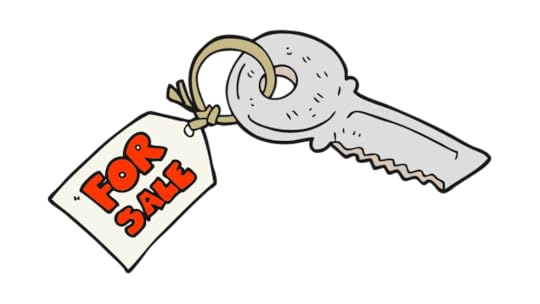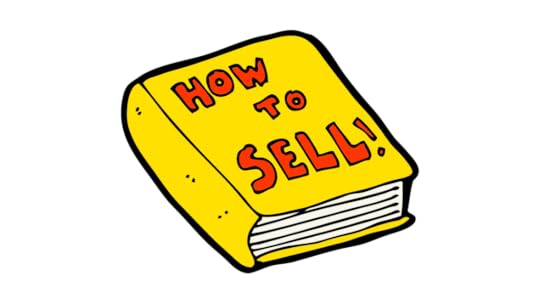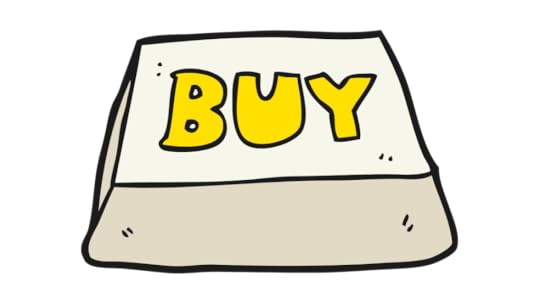How Buying and Selling Have Changed and What It Means for You Every Time You Talk to A Prospect

Quick Links:
What is Selling?Are YOU Selling or are THEY Buying?What the Successful Seller DoesThey Myth of Control in SellingWinning the Sale vs Winning the Order2 Tips to Create a Powerful First Perception
What is Selling?

What is Selling?
‘What is Selling’ may seem like a question with a fairly obvious answer.
However, I ask it all the time of salespeople and I am always surprised at the variety of answers I get.
Ask 200 salespeople this question and you will likely receive 100 different answers. To me, this is a problem.
If salespeople truly don’t understand the purpose of what they are doing each day, then their ability to succeed at their job is compromised.
Salespeople alone are not to blame for this. They have probably
been mislead by their CEO and sales managers into thinking that sales is all
about taking orders.
Perhaps the easiest way to understand what Selling is, is to first agree on what it is not. Selling is NOT about:
Convincing customers to buy your product
Getting an order.
Earning commissions.
Selling is no more about getting an order than the ritualized Japanese Tea Ceremony is about drinking tea. Or that football is about scoring touchdowns. It is essential to not confuse the process with the results.
The beauty of the Japanese tea ceremony is in the sublimely perfect execution of the 25 steps it takes to produce a cup of tea, serve it to your guests and clean up afterwards. Football is about the consistent execution of a process, in this case called a play. The more perfect the execution of the play the more rewards are achieved in the form of touchdowns.
Selling is the same. It is a process. Selling is a process that
is fundamentally an exchange of time between the buyer and seller. At its
heart, Selling is the process by which the customer provides you, the seller,
with a certain amount of their time at each stage of their buying process to
learn about their requirements and provide to them information about the
features and value of your products and services. If you consistently provide
value to the prospect during the time they invest in you, they will continue to
invest more time in you until you have provided the information to enable them
to make an informed purchase decision Which results in or order for you.
For a salesperson, this means that you have to maintain a laser focus on how you can be completely responsive to a prospect or customer’s requirements for information.
In my book, Zero-Time Selling, I show how a salesperson can ensure that every customer interaction will achieve Maximum Impact in the Least Time (MILT). If you’re a salesperson or sales manager, this should be the conscious goal of your day-to-day sales activity. “How can I be completely responsive to the customer’s need for information?”
If you’re completely responsive to your customer’s information
requirements then you will realize the results that you desire:
Getting an order
Earning Commissions
Making customers productive and happy with your product/service
Getting repeat orders
Are You Selling or Are They Buying?

This is not a trick question.
Are you selling or is your customer
buying? The correct answer is both. There is both a sales cycle and a buying
cycle(s) occurring simultaneously on every sales opportunity.
Why is this important to you? Because the primary purpose of your sales cycle is to support your prospect’s buying process by helping them accomplish a single task: making a fully informed decision to purchase the right product or service for their needs.
If you, as a seller, can also empower them to make that purchase decision with the least investment of their time possible then you will have successfully created value for the buyer, laid the foundation for a trust-based relationship, and truly differentiated yourself from your competitors.
The Balance of Power has Shifted
In the olden days, in the dark ages of the pre-Internet world, buyers of products and services, otherwise known as your prospects, were completely dependent on you, the sales professional, for information about the products and services they wanted to buy.
There were no websites to search and very few reliable third-party sources of information about products and services that they could use to shape and guide their buying process. Prospects could only buy as fast as a seller was prepared or willing to supply the information they needed to take into consideration in order to make an optimal purchase decision.
Then the Internet upended that whole cozy arrangement. Experts estimate that prospects today gather 50-75% of data they need to make their decision before they engage with you, the seller, for first time. Now, the buyer is largely in charge of his or her own buying process. With one vital exception. That exception is the reason a prospect needs to work with a salesperson.
At the end of the day, after they have consumed all the public information about a product or service, the remaining data your prospect needs to gather in order to make their decision is generally available only from you, the seller.
Therefore, it seems a bit ironic that when sales cycles get stretched out salespeople will typically point their fingers at the buyer. To a seller it is always the customer who’s the culprit when the sales cycle stalls.
In fact, the opposite is true. It is nearly always the seller’s fault when the buyer stops making progress towards an order. Why? Because the seller didn’t provide the prospect with the information they needed to move on to the subsequent step in their buying process.
If a deal you are working on suddenly loses momentum, take a look in the mirror before you begin pointing fingers at your prospect. Do an honest assessment of your progress in the deal and quickly determine what data the customer needs from you in order to move to the next step of their buying cycle and get them back on track to giving you the order.
As a seller you must also
understand that there is a good chance that there will be more than one buying
cycle occurring simultaneously. Your prospect will have a separate buying
process for every seller in a competitive deal. This is extremely important for
you to keep in mind. If you can be completely responsive to your prospect’s
information requirements then you can gain a competitive advantage over your
competitors.
What the Successful Seller Does
The successful seller is the one
that most closely aligns their selling resources (i.e., their product knowledge
and industry expertise) with the buying needs (i.e., information requirements)
of their prospect to enable them to make the optimum informed decision in the
least time possible. This means that you have to place your resources with the
deepest product knowledge and industry expertise closer to the customer.
To help the prospect move through
their buying cycle in the shortest time you have to eliminate the “get-backs”
from your selling. Every time a salesperson can’t answer a prospect’s question
and says, “I’m sorry I’m going to have to get back to you” he or she is slowing
down the buying cycle. Having the right salespeople on your team who can be
completely responsive to the prospect’s need for information and help them move
through their buying cycle in Zero-Time will definitely enable you to win more
orders in less time.
The First Seller with the Answers Wins
A buying cycle is nothing more than
an organized search for information and data in the form of answers to
questions. How efficiently and effectively you convey that information to your
prospect will be the difference between getting an order and losing a customer.
The Myth of Control in Selling

Are you Walking the Dog or is the Dog Walking You?
There exists a touch of schizophrenia in some of the writing and
blogging on sales, sales improvement and sales training today. On one hand,
there is general agreement that the world has changed, that universally easy
access to information has shifted the balance of power in any sales transaction
from the seller to the customer, converting the old familiar sales cycle into
the buying cycle. Selling has become a “customer-oriented.”
And yet, on the other hand, there still remains a major emphasis
in selling today on the notion of controlling the sales process and controlling
your prospect and customers. (If you Google “controlling the sales process”
you’ll get 31,400,000 results.) However, there is perhaps no bigger myth in
sales today than that of a salesperson controlling the sales process or their
prospects.
Many companies and salespeople still nominally employ the
traditional “control-oriented” sales model today. It is easy to understand why
people gravitate towards this approach to selling. Being in “control” is
comforting. It is a hard habit for sales managers and salespeople to break.
Even though it doesn’t work.
I like to believe that I am in control when I’m taking my dogs
for a walk. Unless they decide that a compelling new smell emanating from the
bushes demands to be investigated. Or some yappy purse dogs straining on their
leashes in the opposite direction on the other side of the street need to be
greeted and sniffed from stem to stern. Like prospects, my dogs indulge my need
to appear to be in control.
Paradoxically, the primary tactic a salesperson often employs in a vain effort to control the sales process centers on controlling and metering the flow of information to the prospect.
Rather than helping the salesperson with his or her control issues, the prospect experiences this absence of information as poor responsiveness and poor sales service. Whatever advantage the salesperson had hoped to gain by “controlling the prospect,” he or she will have lost.
This approach is the exact opposite of how effective sellers
today are using responsiveness, content and speed as competitive advantages to
help the buyer make an informed purchased decision in the least time possible.
Notice the emphasis on “helping the buyer.” Selling must be a service
in support of the buyer. And service, by definition, is about giving, not
holding back.
Rather than making life harder for salespeople, openly
relinquishing any claim to controlling the sales process and the prospect frees
a salesperson to develop more effective ways to create value for the customer
and differentiate their product and company through how they sell.
Acknowledging that you are not in control of the prospect forces
you to focus on your prospect’s requirements, specifically in terms of the
information they must have to make an informed purchase decision. And, how you
can meet their needs by using the resources that actually are under your
control to sell with the maximum impact in the least time possible to win more
orders in less time.
Are
You Trying to Win the Sale or Win the Order?

There is a lot to be said for taking a long-term perspective in
sales. Deals can often take a long time to come to fruition as you work with
the prospect to provide the information they require to move through their
buying process and make an informed purchase decision. But if you are too
focused on winning the order you may end up losing the sale.
Here is something that most sales training doesn’t teach you:
your prospects make up their minds which seller they are going to buy from
fairly early in their buying process, often long before they hand out an order.
That seller has won the sale. If they can shepherd the prospect through the
rest of their buying process without tripping over their tongues or making some
obvious error the order will be theirs. To use the old sales cliche, the
business is theirs to lose.
Unfortunately, short of the prospect telling you, there is no
way to know with 100% certainty whether you have won the sale or not. Over time
your experiences and expertise will blend to give you a reliable intuitive
indicator of where you stand. But even then the only way to proceed is to act
as if every prospect were going to make up their mind on the first call.
How would you win the sale on the first call?
The treasure trove of information available on the Internet means that prospects are now largely pre-educated and somewhat self-qualified before they ever contact a seller.
Experts estimate that prospects have progressed through 50%-75% of their buying cycle before they contact you for the first time. This means that your prospects have a narrower range of information they need answered when you finally connect and their need for information in order to make the best purchased decision is urgent.
The key to winning the sale on the first call is to create a powerful first perception with the prospect. You might be wondering if I meant to say “first impression” instead of “first perception” and my answer is no. To me a first impression means the prospect has some vague notion of who you are, what you do and how you do it.
A first perception, on the other hand, is an immediate recognition and appreciation on the part of the prospect of the value that you can create for them. Impressions are fleeting.
Perceptions are sticky. Perception is reality. Create a compelling first perception with the prospect and they immediately begin to associate their pre-sales experience with you to what it would be like to work with you and your company after the order. Once the prospect takes that mental step then you have won the sale.
How Can You Create a Powerful First Perception?
Two tips:
Sell with Maximum Impact in the Least Time. Plan each sales interaction with the prospect to create value for the prospect and to maximize the return they receive from the time they invest in you.
Be Completely Responsive. The race doesn’t go to the swift. It goes to the responsive. If you assume your prospect is pre-educated before you talk with them, then being completely responsive means quickly providing complete answers to the remaining questions they have. Being fast without content is not responsive. Your prospects have questions and the first seller with the answers wins.
It can take a long time to get an order. But it doesn’t take
long at all to win the sale.
The post How Buying and Selling Have Changed and What It Means for You Every Time You Talk to A Prospect appeared first on Andy Paul.
Andy Paul's Blog
- Andy Paul's profile
- 4 followers



